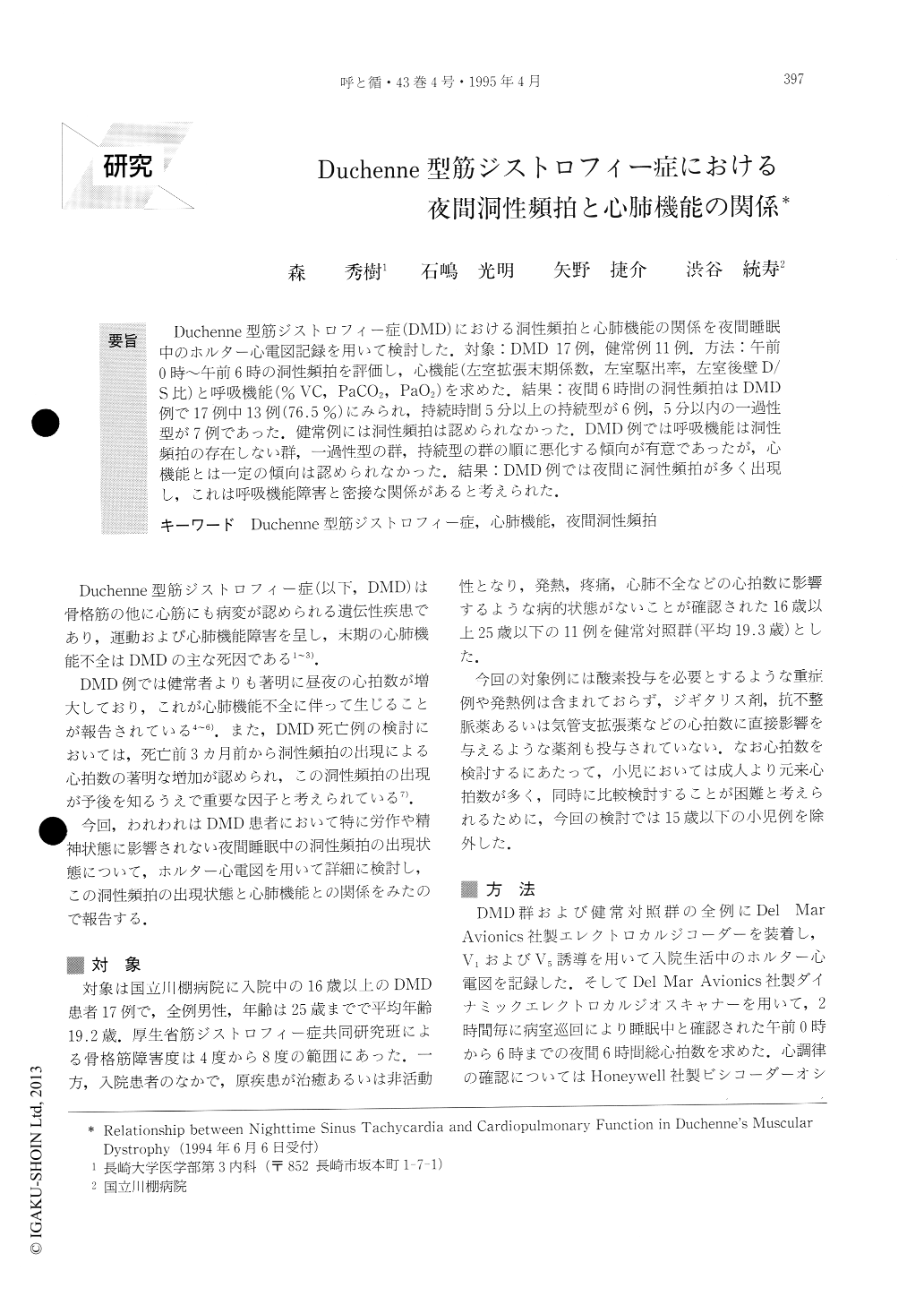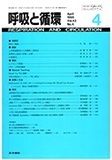Japanese
English
- 有料閲覧
- Abstract 文献概要
- 1ページ目 Look Inside
Duchenne型筋ジストロフィー症(DMD)における洞性頻拍と心肺機能の関係を夜間睡眠中のホルター心電図記録を用いて検討した.対象:DMD17例,健常例11例.方法:午前0時〜午前6時の洞性頻拍を評価し,心機能(左室拡張末期係数,左室駆出率,左室後壁D/S比)と呼吸機能(%VC,PaCO2,PaO2)を求めた.結果:夜間6時間の洞性頻拍はDMD例で17例中13例(76.5%)にみられ,持続時間5分以上の持続型が6例,5分以内の一過性型が7例であった.健常例には洞性頻拍は認められなかった.DMD例では呼吸機能は洞性頻拍の存在しない群,一過性型の群,持続型の群の順に悪化する傾向が有意であったが,心機能とは一定の傾向は認められなかった.結果:DMD例では夜間に洞性頻拍が多く出現し,これは呼吸機能障害と密接な関係があると考えられた.
To evaluate the relationship between nighttime sinus tachycardia (NST) and cardiopulmonary function in Duchenne's muscular dystrophy (DMD), 17 patients with DMD and 11 normal controls were studied using Holter electrocardiographic recording at night (a. m. 0~a. m. 6).
NST was observed in 13 of the 17 patients (76.5%), but not observed in normal controls. NST was divided into the continuous type (over 5 minutes) and the transient type (under 5 minutes) according to continu-ous time of sinus tachycardia. The continuous type was observed in 6, and the transient type in 7 of the 13 patients with NST. Pulmonary function (%VC, PaCO2, PaO2) deteriorated significantly in the continuous type more than in the transient type, and in the transienttype more than in the non-NST group. However, echocardiographic parameters of the cardiac function did not correlate with NST.
We concluded that NST appeared in most MID patients, and closely correlated with pulmonary func-tion.

Copyright © 1995, Igaku-Shoin Ltd. All rights reserved.


